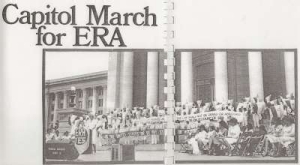Written By Julie Stidolph
In January 1972, forty-nine years after suffragist Alice Paul first introduced the Equal Rights Amendment, the measure finally passed in both houses of Congress. State legislatures across the country raced to be part of the historic constitutional change, with 13 ratifying the amendment within the following three days. In Oklahoma, the only initial concern raised by the ERA was a small controversy over which senator would be credited with filing the resolution, and it easily passed the Senate with only a voice vote.1 However, this benign beginning was only the calm before the storm. A week later, legislators in the House defeated the measure, arguing that it needed further study given its potential consequences.2 Thus, in a portent of future events, Oklahoma became the first state to vote down the Equal Rights Amendment. The public and legislative battle over ratification would last over ten years.




